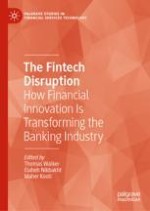This book provides both practice-oriented and academic insights into the disruptive power of fintech for the banking industry. It explores (1) whether and how the banking industry can use newly emerging technologies in the financial sphere to its advantage while managing any associated risks, (2) how these technologies affect traditional banking service formats as well as the pricing of these services, and (3) whether the emergence of fintech in the banking industry calls for a rethinking of existing banking regulations such as the Basel Accords as well as country-specific regulations.
Prior publications in this area typically examine both current applications of fintech in the banking industry, as well as its future prospects, by analyzing actual cases or exploring the impact of a single emerging technology on the banking industry. They often ignore the interdependence between emerging technologies and overlook the connection between fintech as a whole and the future of the banking industry. This book addresses this gap by providing a comprehensive overview of various fintech applications and by analyzing what they mean for the future of banking. Given the potentially disruptive power of fintech, the book will focus on the challenges banking supervisors are likely to encounter as a result of fintech’s continual ascent. It will thus encourage readers to think about and explore how to find a balance between the beneficial aspects of fintech and the challenges it creates in terms of supervision, regulation, and risk management.
